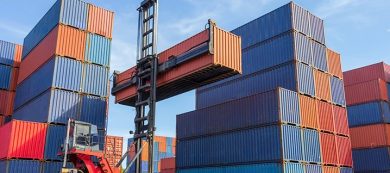5 BEST PRACTICES FOR TRANSPORTING CONTAINERS SAFELY BY SEA
Most goods and cargo are transported around the world using ocean and sea freight. In order to make sure that this occurs smoothly, shipping companies must make sure each of the containers is properly packed, stowed, and accounted for. Due to the large volume of cargo involved, international shipping transport companies rely on a few best practices to ensure that containers are shipped properly.
Contents
1.Stuffing
Standard 20 ft. high cube containers are measured as 1 TEU (twenty-foot equivalent unit) in the shipping industry and can fit quite a bit of cargo. The practice of loading cargo into a container is known as stuffing. Considering the nature of the industry, it is important to be careful and precise during this step.
Check your cargo weight before packing using carefully calibrated industrial scales. You will also have to check the weight of the packed container as well, making sure it matches the weight of your cargo plus the container.
Intermodal points have a number of different kinds of scales to weight cargo and containers, including conveyor scales, forklift scales, and floor scales. Proper weight tracking allows you to provide consistently accurate information to the shipping carrier, as well as let you keep track of the correct amount of goods you are shipping.
2.Container Condition
The physical condition of a container is very important, as it travels by sea and needs to withstand saltwater and weather conditions, as well as support heavy overhead weight. A newer container is less likely to leak or not close right, but older ones must be inspected properly before loading.
A correctly prepared container will be weatherproof, odor-free, and properly sealed to prevent leaks, dust, or container contents from spilling. Of course, items should be packed in the container carefully to further minimize this. Containers should have belts and devices to hold the cargo in place and prevent it from moving during transport.
In the case of transport of chemicals or some potentially harmful materials, this practice is doubly important.
Make sure any repairs to the containers are made properly and professionally to prolong its life and assure safe transport. Some common container issues include damaged locking mechanisms, broken welds, small or large holes, dents, rust, and odor.
3.Stowing
Once containers are packed and their contents accounted for, they will have to be stowed on the carrier. This process involves the careful placement of containers onto a cargo ship so that they can all travel safely. During stowing, both the containers and their contents must be considered when deciding the order to place containers.

For shippers dealing with consolidation, this process must begin before the container is packed, as they decide which cargo and materials can be packed together. Sensitive, hazardous, or volatile materials should be separated according to compatibility with the rest of the materials. Dry goods should not be stored with wet goods. Some chemical or highly reactive cargo may have its own separation requirements.
When stowing the containers onto the ship, the same practice is followed. Weight can also be a factor, as it is best to store heavy cargo on the bottom. The containers need to be organized in a way that optimizes loading, unloading, safe transport, and the quality of the goods being shipped.
4.Correct Valuation
It is important to accurately measure, account for, and report the contents of your container to your shipper, freight forwarder, or customs broker. This will not only help expedite the receipt of your cargo but will also prevent any delays, surprises, or extra fees at a foreign port.
As goods change hands and values quite dramatically when shipped, keeping an accurate record or item weights, description, quantity, and value will facilitate your shipping experience.
5.Safety
Container shipping is often seen as transactional, or as a way of goods moving from one place to another. Ocean carriers are subject to turbulent seas, rough weather conditions, and a limited crew. Therefore, making sure the vessel is prepared safely and containers properly lashed is of utmost importance.
Containers are blocked and lashed together and secured to the support points of the ship. Lashings should be short and tight to ensure the best hold for the journey. This assures the safety of the items transported, as well as the safety of the crew who will man the ship during its voyage.
Final Thoughts
When shipping goods across the world, shipping companies must tap into an existing protocol of shipping transportation. By assuring that all parties adhere to these practices, the risk of loss, damage, or injury can be reduced greatly. In addition, it optimizes the global shipping process, therefore reducing unnecessary cost and time expenditure.
At FYM Express, we are experienced professionals in the shipping industry, following the correct shipping procedures in ports across the globe. As your trusted partner in global shipping, we know the importance of your supply chain. Call us at (84) 028 66 787 222 to see how we can help you optimize your shipping experience.


